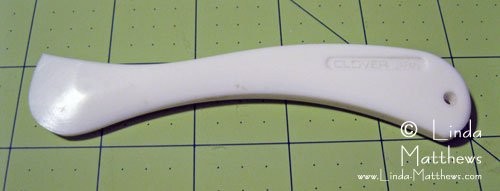Fabric marking tools are essential for any sewing or quilting project. From marking precise seam lines to transferring intricate designs, these tools help ensure accuracy and professional results. However, like any tool, fabric markers, pens, and pencils require proper care to maintain their effectiveness and longevity. Have you ever experienced a dried-out pen, a blunt pencil, or a chalk marker that leaves stubborn residue? Understanding how to care for your fabric marking tools can prevent these frustrations and ensure they are always ready when you need them. Let’s explore the best practices to keep your marking tools in top condition.
Different types of fabric marking tools require specific care to function optimally. Among the most popular are hera markers, fabric marking pens, and chalk pencils. Each of these has unique properties and therefore needs tailored maintenance routines.
Caring for Hera Markers
Hera markers are unique tools that create crease lines on fabric instead of using ink or chalk. Their care is remarkably simple due to their robust, often plastic or bone construction.
- Cleaning: Hera markers generally require minimal cleaning. If residue builds up, simply wipe them down with a dry or slightly damp cloth. Avoid harsh solvents or submerging them in water, as this is usually unnecessary and could potentially damage certain materials.
- Storage: Store your hera marker in a drawer or container where it won’t be scratched or damaged. Keeping it with your other sewing tools is perfectly acceptable. The durability of a hera marker means storage is more about preventing misplacement than damage.
- Maintenance: There are no moving parts or consumables with a hera marker. Regular inspection for chips or cracks is advisable, but generally, hera markers are very low-maintenance tools. Their lifespan is typically very long if handled with reasonable care.
Maintaining Fabric Marking Pens
Fabric marking pens, especially those with disappearing or washable inks, need more attention to prevent drying out and ensure consistent performance.
- Proper Storage: The most critical aspect of pen care is proper storage. Always store fabric marking pens horizontally or tip-down when possible. This helps keep the ink near the tip and prevents it from drying out prematurely. Ensure the cap is tightly sealed after each use. Air exposure is the enemy of these pens, leading to ink evaporation and clogs.
- Cleaning Pen Tips: Sometimes, fabric fibers or dried ink can clog the pen tip. For water-soluble pens, gently dabbing the tip with a damp cloth or sponge might be enough to clear the blockage. For pens with specialized inks, refer to the manufacturer’s instructions. Some pens might have replaceable tips, which is a great feature to look for.
- Testing Regularly: Even with careful storage, pens can sometimes fail. Always test your fabric marking pen on a scrap piece of the same fabric before starting your project. This ensures the ink still flows correctly and, importantly, that it removes as expected.
Caring for Chalk Marking Tools
Chalk pencils and markers are favored for their erasability, but they also require specific care to maintain their marking precision and prevent messy application.
- Sharpening Chalk Pencils: Mechanical chalk pencils, like Bohin chalk pencils, often come with sharpeners. Regularly sharpening the chalk tip ensures a fine line for accurate marking. Use a sharpener designed for chalk or a very fine pencil sharpener to avoid breaking the chalk. Replaceable chalk cartridges are also available, offering a convenient way to keep your pencil ready.
- Cleaning Chalk Residue: While chalk is designed to be removable, excessive build-up on the fabric or around the pencil tip can hinder performance. Use a soft brush or a dry cloth to gently remove excess chalk dust from your work and the tool itself. For stubborn marks on fabric, a damp cloth is usually effective, but always test on a scrap first.
- Storing Chalk Pencils: Store chalk pencils in a way that protects the delicate chalk tip. Keeping them in their original packaging or a pencil case can prevent breakage. Avoid storing them in overly humid environments, as moisture can affect the chalk’s consistency.
General Tips for Extending the Life of Your Fabric Marking Tools
Beyond tool-specific care, some general practices will help extend the life of all your fabric marking implements.
- Read Instructions: Always read the manufacturer’s instructions that come with your fabric marking tools. These instructions often contain specific care advice tailored to the tool’s ink or material.
- Test on Scrap Fabric: We cannot stress this enough: always test your marking tool on a scrap of the same fabric you are using for your project. This not only checks for mark removability but also ensures the tool is working correctly before you potentially damage your project.
- Handle with Care: Avoid dropping or roughly handling your marking tools. This is especially important for pens and chalk pencils, where delicate tips or mechanisms can be damaged.
- Replace When Necessary: Fabric marking tools, like all supplies, have a lifespan. If your pens are consistently drying out, your chalk pencils are constantly breaking, or your hera marker is chipped, it’s time to replace them. Investing in fresh, well-functioning tools will improve your sewing and quilting experience.
By following these care tips, you can ensure your fabric marking tools remain reliable and effective for all your sewing and quilting projects. Proper maintenance not only saves you money in the long run but also reduces frustration and improves the quality of your finished work. Take a few moments to care for your tools, and they will serve you well in your creative endeavors.

